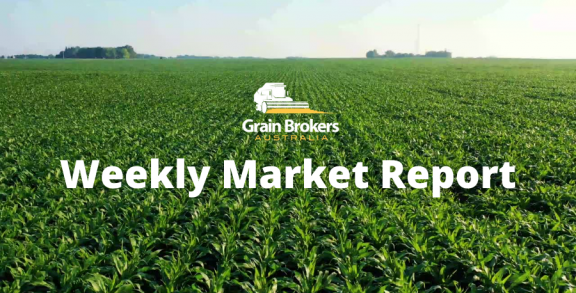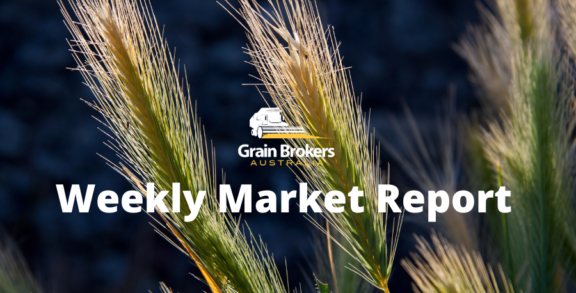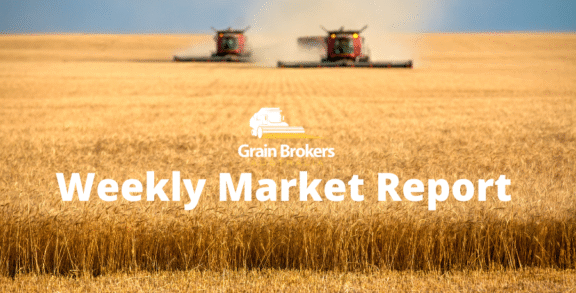
The release of the latest United States Department of Agriculture’s prospective plantings outlook for 2023 and the quarterly stocks update stole the grain market limelight on Friday, and there were a few surprises amongst the plethora of data released.
General trade consensus on the planting estimates was bearish for new crop corn, bullish for new crop soybeans and neutral for new crop wheat. The quarterly stock numbers are considered quite bullish for both corn and soybean values and neutral for wheat.
An increase in the row-crop area is critical for replenishing United States supplies in 2023/24. The USDA expects the combined planted area to be 2 per cent higher year-on-year at 72.64 million hectares. This would be the fourth-largest collective area on record behind 2017, 2018 and 2021.
The soybean/corn futures price ratio averaged around 2.32 in February, the lowest since 2016, basically begging the US farmer to increase corn plantings at the expense of soybeans this year. In 2016 US farmers reacted to the pricing incentive by increasing the corn area to 38.04 million hectares and only planting 33.75 million hectares of soybeans.
The area planted to corn for all purposes in 2023 is estimated at 37.23 million hectares, up 3.9 per cent on last season’s planted area but down 1.4 per cent on 2021 number. The USDA’s estimate surprised the market to the high side, coming in well above the average trade forecast of 36.78 million hectares and the USDA’s February outlook of 36.83 million hectares. While the magnitude of the trade miss was surprising, corn production is still considered very lucrative in the US, and falling nitrogen prices generally swing the pendulum in favour of corn.
North Dakota saw the largest increase in the expected planted area, with farmers intending to sow 1.52 million hectares, 324,000 hectares or 27 per cent more than in 2022. This follows a decrease in North Dakota’s planted area of 465,000 hectares from 2021 to 2022. Planted area records are predicted for Arizona and Idaho, with the forecast seeding up 25 per cent and 22 per cent, respectively.
Only two of the major corn producing states are currently anticipating a decrease in their area. They are Nebraska, down 40,000 hectares or just over 1 per cent to 3.84 million hectares, and Texas, also down 40,000 hectares but 4.7 per cent lower proportionally to 830,000 hectares.
The USDA pegged this season’s soybean plantings at 35.41 million hectares, up fractionally on the 35.39 million hectares planted last year but 0.4 per cent higher than the 35.29 million hectares sown to soybeans in 2021. While unchanged on the USDA’s February outlook, it was almost 300,000 hectares lower than the average trade estimate.
Planted area increases of more than 40,000 hectares are expected in the Upper Midwest states of Minnesota, North Dakota, South Dakota, and Wisconsin, balanced by decreases of 40,000 hectares or more in Arkansas, Indiana, Kansas, Michigan and Missouri. Record plantings are forecast for Illinois, Nebraska, New York, Ohio, and Wisconsin.
The all-wheat planted area is projected to increase by 9 per cent from 18.51 million hectares last season to 20.18 million hectares this season. The winter wheat area makes up 82 per cent of the total area dedicated to wheat and is forecast to be 12.7 per cent higher at 15.18 million hectares. The spring wheat and durum wheat areas are predicted to be down 2.4 per cent to 4.28 million hectares and up 9.1 per cent to 720,000 hectares, respectively.
Kansas is the biggest wheat producing state, and the USDA inked the planted area 11 per cent higher at 3.28 million hectares. The other significant increase was down in Texas, where the USDA says farmers planted 2.71 million hectares of winter wheat in the autumn of 2022, a year-on-year increase of 26.4 per cent. On the flip side, the planted areas in Minnesota and Washington are expected to be 6 per cent and 4 per cent lower, respectively.
The sorghum area continues to decline, with anticipated planting at 2.42 million hectares, down 5.5 per cent from 2.56 million hectares in 2022 after a decrease of 13.4 per cent from 2.96 million hectares in 2021. Barley is not a big crop in the US, and farmers have indicated that their planting will be down slightly year-on-year to 1.18 million hectares but still significantly higher than the 1.1 million hectares seeded in the season prior.
As of March 1, 2023, the USDA called total corn inventories 188 million metric tonne, down 5 per cent from the same date a year ago and the lowest in nine years. This suggests that more corn was fed to livestock in the US over the last quarter than the trade projected and turns the screws a little tighter on the domestic balance sheet. Of the total, on-farm stocks were 1 per cent higher than 12 months ago at 104.4MMT. Off-farm stocks were reported at 83.6MMT, down 10 per cent on March 1, 2022. Total domestic consumption and exports were pencilled in at 86.9MMT compared to 98.6MMT in the same quarter last year.
According to the USDA, soybeans stored in all positions as of March 1 were 46MMT, down 13 per cent year-on-year and the lowest since 2017. Since exports are known, and the crush numbers are quite visible, this suggests that last year’s crop was a skosh smaller than current assessments. Inventories held on-farm were down slightly from a year ago at 20.4MMT, but off-farm stocks were 21 per cent lower than a year ago at 25.5MMT. Total disappearance for the quarter of 36.5MMT was 11 per cent higher than the same quarter in 2022.
While wheat stocks came in slightly above trade expectations, the USDA’s printed number of 25.7MMT is 8 per cent lower than last year and the lowest March 1 number in 15 years. Inventories held on-farm are up 36 per cent compared to 2022 at 6.2MMT, and off-farm stocks were reported 16 per cent lower at 19.6MMT. Total usage for the months of December, January and February was pegged at 10MMT, 11 per cent higher than the previous corresponding period.
Spring has sprung in the US, and the weather conditions over the next three months hold the key to winter, spring and summer crop production this year. While the Central Plains states of Kansas and Nebraska continue to battle severe drought, parts of the Northern Plains are extremely wet, and the storm systems keep rolling through, dumping more rain and snow. The snowpack remains extremely heavy in many regions, and growers are already talking up the prevent plant area for fear it will be too wet to mobilise the spring and summer crop planting programs.
Call your local Grain Brokers Australia representative on 1300 946 544 to discuss your grain marketing needs.





